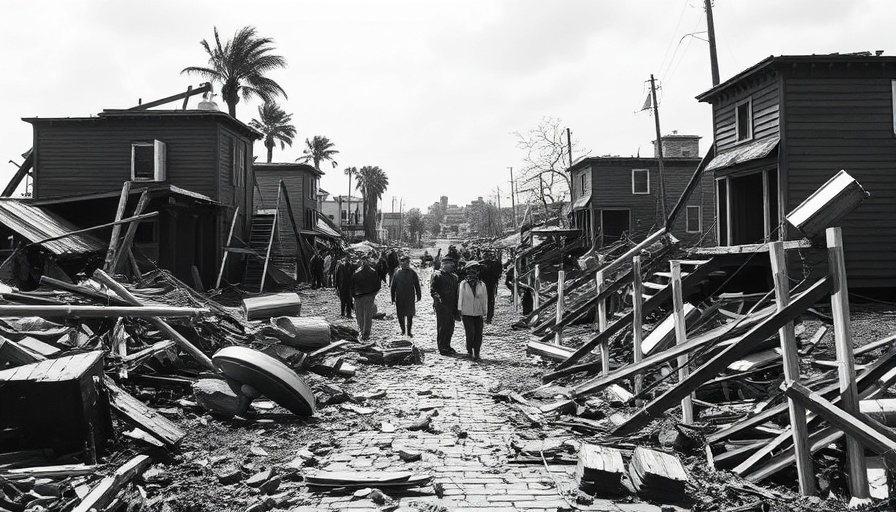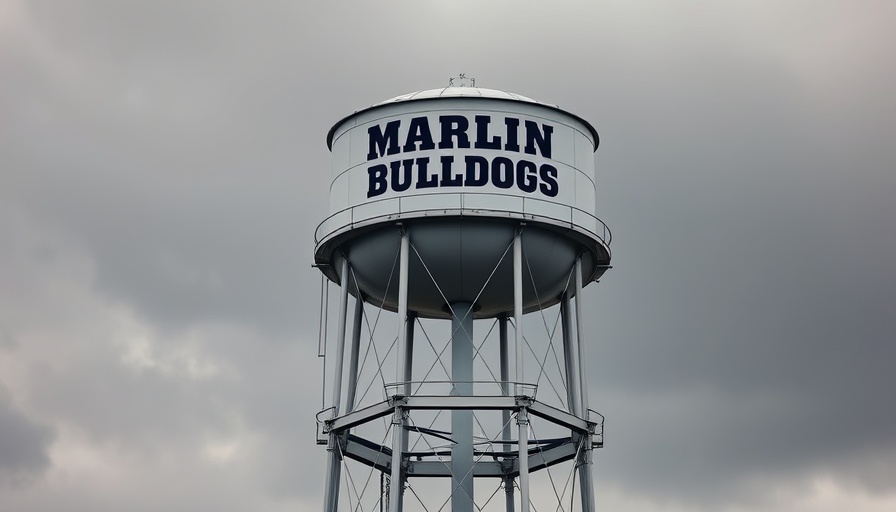
125 Years Since the Great Galveston Hurricane: Lessons Learned
On this September 8th, we mark the 125-year anniversary of the Great Galveston Hurricane, a catastrophic event that forever altered the landscape and history of Texas. With winds reaching up to 145 mph, this Category 4 storm struck a thriving port city, claiming the lives of an estimated 6,000 to 12,000 individuals, making it the deadliest natural disaster in U.S. history.
The Catalyst of Change for Galveston
Once celebrated as Texas's largest city in the 1880s, Galveston’s fate was reshaped by the impacts of this hurricane. In just one day, the rising tide and relentless storm surge cut the population in half, leading to a mass exodus inland. The void left in Galveston ushered Houston into its role as the state’s largest city, forever changing Texas's urban dynamic.
Understanding the Forecast: A Missed Opportunity
The events leading up to the hurricane are a stark reminder of the limits of predictive science during that era. Dr. Isaac Cline, the local meteorologist, misjudged the indications of disaster, a decision compounded by a lack of coordination with forecasts from Cuba indicating the storm's trajectory toward Galveston. This discrepancy in early warning systems serves as a pressing reminder of the need for effective communication during crises.
The Aftermath: Infrastructure Reforms in the Tide of Tragedy
The devastation prompted immediate and lasting changes. The construction of a seawall—built between 1902 and 1904—was a direct response to the loss of life and property. More than just a physical barrier against water, it represented a community determined to rebuild and protect itself against future storms. While Galveston has seen much growth since then, the specter of the hurricane looms large in local consciousness.
The Importance of Preparedness and Resilience
Galveston’s experience underscores the critical need for preparation and resilience in coastal cities. As we approach peak hurricane season, discussions around infrastructure and emergency protocols are more vital than ever. The juxtaposition of Galveston's past with current meteorological innovations raises questions about how far we’ve come and what still needs to be done. Are coastal cities better equipped today, and what lessons have we retained from the past? Understanding these dynamics is crucial for public safety and policy-making.
Reflections and Community Responsibility
The anniversary of the Great Galveston Hurricane also serves as an opportunity to reflect on community responsibility in the face of natural disasters. As weather patterns shift and storms become more unpredictable, communities must engage in proactive measures to safeguard their livelihoods. Local governments are tasked with ensuring that residents receive timely alerts and assistance, emphasizing that the safety of people depends not only on technology but also on community involvement and preparedness.
Looking Forward: What Lies Ahead for Texas Communities?
With hurricane season being a vital consideration for Texas's Gulf Coast, leaders and citizens alike must stay vigilant. The path forward calls for collaboration among local authorities, businesses, and residents—a united front building on the lessons learned from past catastrophes. The haunting memories of the Great Galveston Hurricane should be viewed not simply as reminders of despair but as catalysts for progress and mutual responsibility.
As the anniversary of the Great Galveston Hurricane prompts reflection, it is also a call for action. It is essential for Texas to prioritize disaster preparedness, infrastructure development, and community engagement today to protect against the storms of tomorrow. Let's utilize these lessons to create a safer, more resilient future for our coastal cities.
 Add Element
Add Element  Add Row
Add Row 



Write A Comment